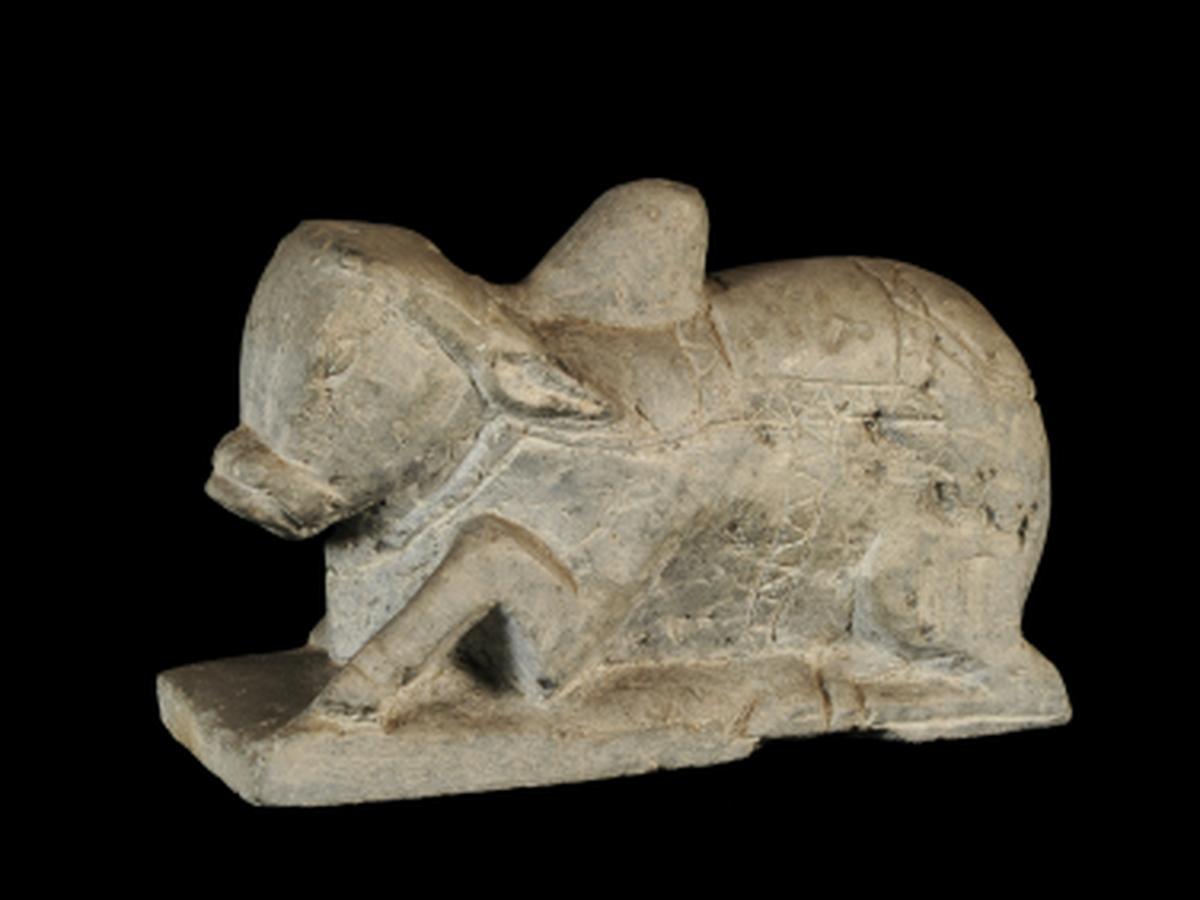State
Tribe Name
Art Type
short description
An extraordinary piece of tribal art, this sculpture was carved by the Santal, who are one of the largest tribal communities in India. An explicit representation of the ethos and aesthetic values of the producers, this sculpture is now housed in the Indian Museum, Kolkata. Anatomically the bull effigy is seated on a flat rectangular base slab pedestal. While the ears, hump, legs, and tail are intricately carved, the surface of the body is engraved with motifs of aesthetic and symbolic significance.
Thumbnail

Filter Postion
Left
Filter Background
Off
Theme
Filter Header Image

content
Image

description
An extraordinary piece of tribal art, this sculpture was carved by the Santal, who are one of the largest tribal communities in India. An explicit representation of the ethos and aesthetic values of the producers, this sculpture is now housed in the Indian Museum, Kolkata. Anatomically the bull effigy is seated on a flat rectangular base slab pedestal. While the ears, hump, legs, and tail are intricately carved, the surface of the body is engraved with motifs of aesthetic and symbolic significance.
Traditionally bulls signify strength, endurance, and agricultural wealth, which are the backbone of the agrarian life of the Santals. The pedestal is chipped at both corners but leads to an inference of a utilitarian/ritualistic purpose: perhaps for use in ancestral worship or community celebration. Being a tribe deeply ingrained in nature and animals, the Santals would animate such figures in wood, stone, or metal to bring to life the myths and livelihoods and deities associated with them. Thus, with its manifestations, this sculpture becomes an emblem of Santal skill and a view of the world, ensuring the continuity of a very important narrative concerning indigenous art forms in India.
Traditionally bulls signify strength, endurance, and agricultural wealth, which are the backbone of the agrarian life of the Santals. The pedestal is chipped at both corners but leads to an inference of a utilitarian/ritualistic purpose: perhaps for use in ancestral worship or community celebration. Being a tribe deeply ingrained in nature and animals, the Santals would animate such figures in wood, stone, or metal to bring to life the myths and livelihoods and deities associated with them. Thus, with its manifestations, this sculpture becomes an emblem of Santal skill and a view of the world, ensuring the continuity of a very important narrative concerning indigenous art forms in India.
Image Mode
landscape
promoted
On
Verified
Off
